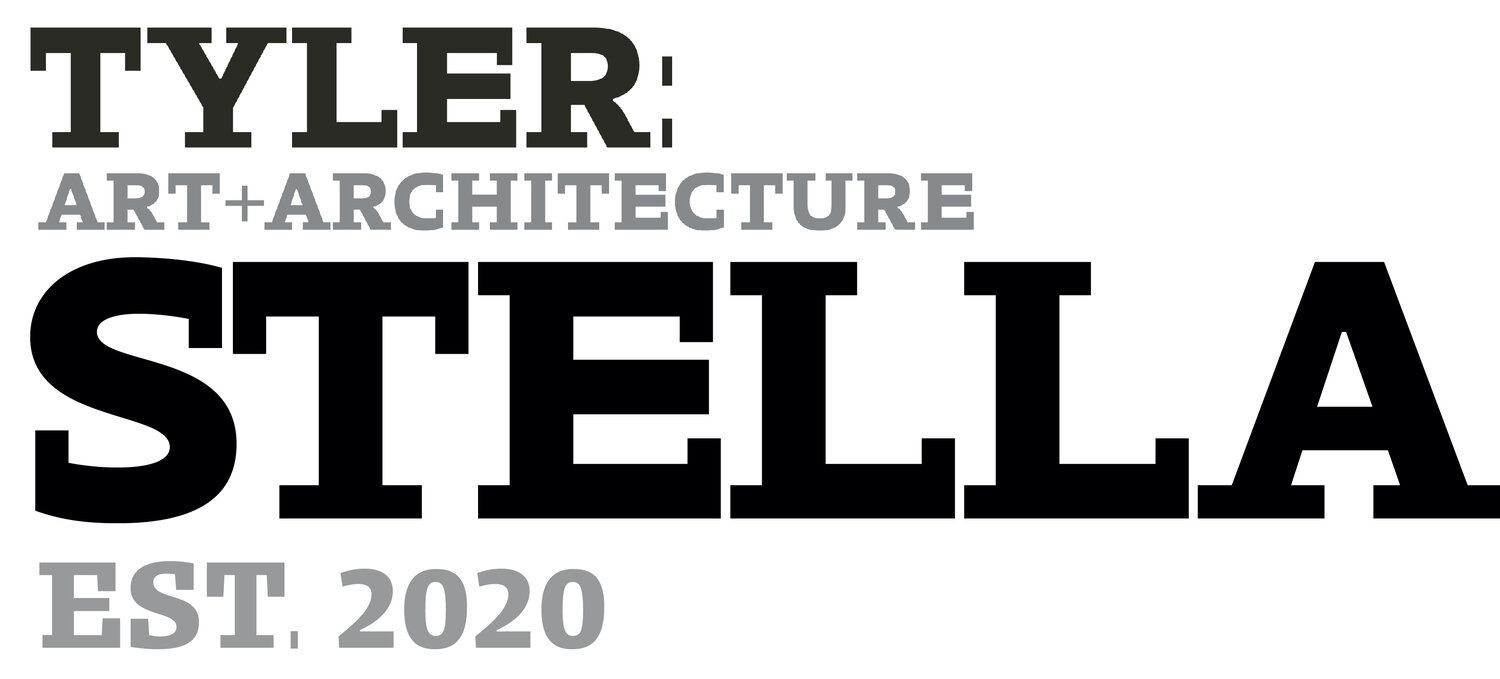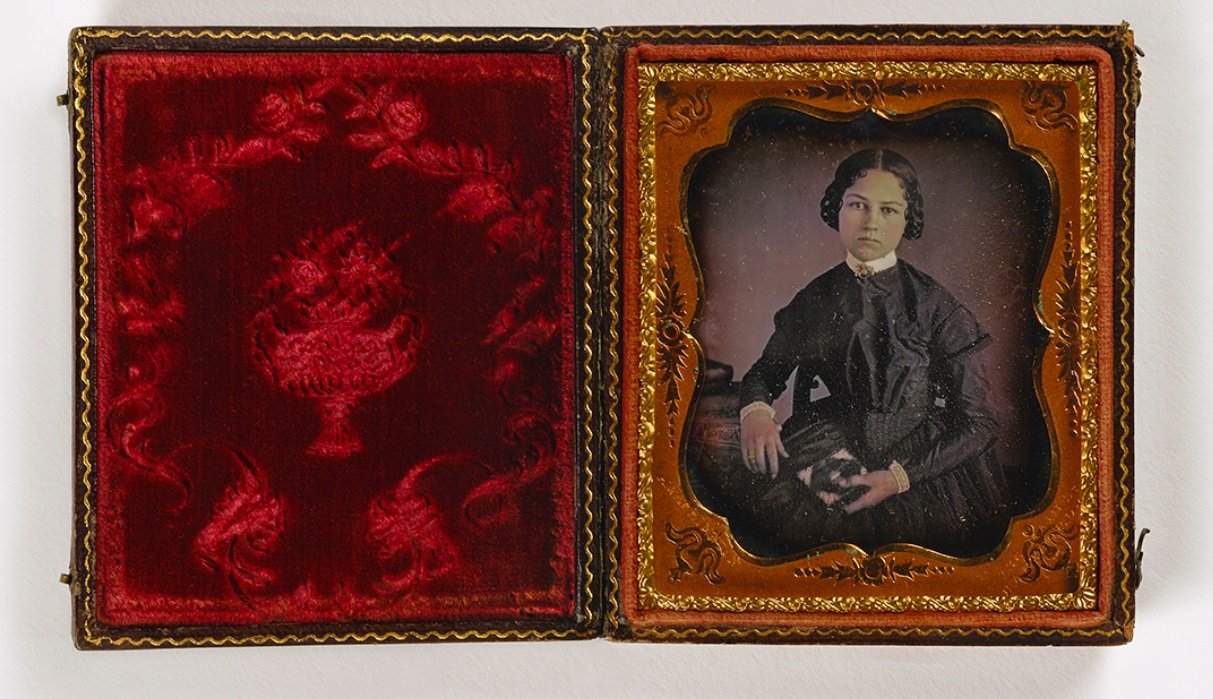A Woman’s Place Is… In the Daguerreotype
by Camila Medina
While perusing the digital collection from the Library Company of Philadelphia, this puzzling daguerreotype struck me. In sharp contrast with other cased images available at the library, this unidentified woman displayed different conventions in her portraiture props–most strikingly, she holds on her lap a closed daguerreotype. The singularity of her portrait compelled me to delve into a number of questions that guided my research project for the Art & Archival Memory seminar: from all the objects at her disposal to compose her portrait, why did she choose that particular daguerreotype? Why was it photographed closed? Something impeded her to show to the viewer the one portrayed in her portable daguerreotype, or did she want to display to the viewer she has a passion for photography?
With those questions surmounting in my mind, this research project undertakes this daguerreotype as the starting point to understand the relationship between photography studios and their sitters in the mid-nineteenth century, concerning specifically the production of daguerreotype portraying women. We can only find portraits like these taken by African American photographers, and this research project aims to tackle the circumstances in which this peculiar scene developed. Additionally, as you are going to see being unfolded in the exhibition, what those portraits tell us about the social role women occupied in relation to image technologies such as daguerreotype–specially concerning how they perceived those technological novelties as a means to circumscribe their identity and subjectivity? As you may notice, I do not attempt to hold the authority to ascribe certainties to you as the visitor, but to spell you–as this unidentified woman did to me–in this “rabbit hole”.
LABEL
Photographs tell more than their subjects intended, revealing unintentional details about the context in which the picture was taken. In the mid-nineteenth century, the daguerreotype was the most popular novelty flooding everyone’s imagination and homes. However, only a handful of photographer’s studios were run by African American artists–and even though a minority, those photographers had a remarkable singular image composition in a time when photography was not seen as an art form yet. The daguerreotype seen here from circa 1853 represents the unique style displayed by Glenalvin Goodridge’s photography studio. The unidentified subject portrayed in this daguerreotype attempts to orchestrate every single aspect disclosed to the viewer–a closed book over a side table tells about her intelligence, high cliffs behind her effect depth, her hair meticulously tied up shows her refinement. However, as the woman portrayed holds on her lap a portable daguerreotype, the photograph sustains the mystery of who she carries close to her heart.
COUNTERLABEL
If you could take only one photograph portraying yourself, which objects would you like to be portrayed with? Looking into the photography fashion in the mid-nineteenth century, women were usually portrayed signaling her virtuous qualities or her reputable family role–therefore, a lot of photographs with flower arrangements and books pairing with others with children. In this landscape, when women are portrayed carrying a daguerreotype, they show to the viewer the one depicted–usually a family member recently deceased, as their husband. However, the African American photographer Glenalvin Goodridge has several women portraits carrying a closed portable daguerreotype, like the one on exhibition here. This unidentified young woman tells the viewer that she carries close to her heart a dear one, but does not show who is. Would the loved one be someone the woman could not show to society? Would that signal she was a photographer too?
Not only some women wanted to be portrayed carrying close to her the daguerreotype of their loved one recently deceased, but it was actually expected that reputable women would seek this kind of image composition once they become widowers. In this photograph, we see Julianna Randolph Wood, member of a prestigious family in Pennsylvania from the nineteenth century, in a more conventional scene–contrasting with the previous daguerreotype portraying the unidentified young woman with a closed portable daguerreotype. The photograph is dated from circa 1845 because it was the year her husband, Richard Wood, passed away. According to social decorum, it was considered appropriate for the widower to take a new portrait representing her new condition, reiterating her role of keeping the family memory alive. The photographer’s studio could not be identified.
Glenalvin Goodridge was one of the few African American photographers to sustain a profitable photographer’s studio in the mid-nineteenth century. Although we cannot tell who is the sitter we are connecting with, her daguerreotype holds striking similarities with other portraits taken by this remarkable photographer–in comparison with the previous daguerreotype portraying Julianna Wood, this photograph displays some conventional aspects in the image composition, as the women photographed shows an impeachable formal dressing, carefully curated for the occasion. However, the difference is patent–as the first image of the exhibition, the unidentified woman also holds her daguerreotype closed. The photographer would be the only one in the East Coast to do such an arrangement. The prevalence of white women in these photographs with a closed daguerreotype takes the mystery to another level, as also the fact other photography studios administered by White artists did not create similar portraits. The daguerreotype dates from around 1851.
Augustus Washington belonged, along with Glenalvin Goodridge, to the select group of African American photographers to enjoy recognition and conduct successful studios in the mid-nineteenth century. Adding to our questions, this unidentified young woman was portrayed carrying a closed daguerreotype, as her right elbow rests on a side table ornamented with some books. She wears a dark dress with a golden pin in her neckband, her braids may gesture towards her young age. Even though the daguerreotype could not be dated, the fact that another African American photography studio also arranged such a peculiar visual composition is puzzling. Other photography studios from the same period administered by White artists did not portray women carrying cased images.
This portrait of an African American young woman seeks to cover a number of questions raised by the first image, which centers the research project developed in the Art & Archival Memory graduate seminar in partnership with the Library Company of Philadelphia. What does this daguerreotype, dated from circa 1850, answer? One question that remained concerned the fact most of the daguerreotypes exhibited portrayed white women–thus, we wondered if different composition conventions were applied for the portrait of African American women. We could not locate a daguerreotype portraying an African American woman holding a cased image, nor from Glenalvin Goodridge’s photography studio. Those objects would be more telling about the mysterious case of the closed daguerreotype. Even though we could not identify the photographer, from the image we see here we can assert that props signaling the woman’s virtuosity were similarly employed in this portrait in comparison with others seen in this exhibition. Would that certify that African American women used to take photographs carrying with them closed portable daguerreotypes?
A Woman’s Place Is…
How do you like to photograph yourself? Do you prefer to take a selfie, or do you like to have someone else portraying you? Do you prefer to have a specific backdrop or landscape behind you? What time of the day do you think would be most flattering or lighting isn’t at all important to your portrait? What kind of objects do you prefer to be associated with? Do you like to be portrayed wearing a specific style? What kind of clothes do you like to be photographed with? Are you holding something? Which personal objects do you think you’d like to show in this portrait?
Camila Medina
Art History / 2029
As a Temple University Fellow and PhD student in Art History, her research focuses on Latin American media art and intellectual history, the entanglements between art and technology, international constructivism, and spectatorship. Prior to resuming her doctoral studies, she earned her MA in Communication Technologies and Aesthetics at Universidade Federal Fluminense, Brazil, and undertook professional training in time-based media art preservation at Danube University Krems, Austria. Previously held professional appointments curating photography exhibitions, managing digital marketing teams for visual arts projects, coordinating interactive audiovisual documentaries, and producing film festivals in Brazil.







